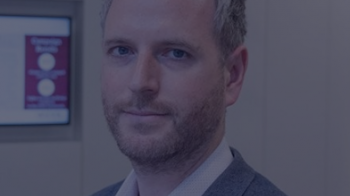How to combat ad bombardment
Natalie Lock - Account Director, Quantcast
Quantcast’s Natalie Lock explains how brands can use frequency management to prevent ad bombardment but ensure ads have an impact
One of the biggest complaints among internet users is the repetition or obtrusiveness of advertising. Often caused by poor, incomplete or stale data, consumers can find themselves stalked through their online journey, exposed to the same adverts again and again. But how can brands grab the increasingly sought after attention of consumers while not slipping into the territory of ad bombardment?
The subject of ad frequency has come under further scrutiny over the past few months. The Trust Group, (a working group consisting of members of the Advertising Association, ISBA and Credos) recently released research into trust in the ad industry which showed that bombardment and ad frequency were of significant public concern.
Perhaps the reason controlling frequency isn’t discussed more widely is because it’s really difficult to do.
The cookie remains the primary method of identifying individuals for the purposes of advertising, especially for those companies without extensive first party datasets. Unfortunately, most cookies have a short lifespan. Internet users clear them or they expire and new ones are created. There are very few ‘persistent’ cookies out there. The machines determining where and when to show ads to internet users have no way of knowing that the new cookie belongs to a consumer that’s already seen a particular ad, so it shows it again.
The result of this partial view of the audience is that a small fraction of consumers see the vast majority of ads and become understandably annoyed. At the same time, the majority of consumers don’t see enough to have an impact. Brands lose twice by wasting large amounts of budget while alienating potential customers at the same time. This dynamic is compounded by the industry standard approach to measuring success by average frequency.
Multiply across the billions of cookies dropped and ads served on the internet each day, and it’s easy to see why consumers might feel they’re being bombarded and so developing negative attitudes toward online advertising.
Identifying optimal frequency
‘The rule of seven’ is one well-known piece of received industry wisdom that a person needs to see or hear your marketing message at least seven times before they take action.
While this narrow approach is too simplistic for a complex digital world, understanding what level is appropriate is vital when it comes to gaining consumer trust and, eventually, love. That long-term feeling towards a brand is something that industry leaders and texts such as Binet and Field’s ‘The long and short of it’ identify as leading to overall business growth.
The frequency challenge
At Quantcast, we solve this challenge through a technique called frequency management. We developed a model that can help brands by targeting a specific frequency range, rather than applying a frequency cap.
A single exposure to an ad may not move the needle when it comes to brand metrics, however seeing 20 or more could be considered intrusive. Quantcast’s frequency management aims to redress that distribution curve, with more impressions aimed at the most effective frequency range.
This article details technically how we do that at Quantcast, but essentially we use something called Model Predictive Control to predict how long a particular cookie will be visible. If we can reliably identify the cookies that will ‘stick around’, we are better placed to reach those cookies the right number of times with a brand message.
Quantcast’s frequency management works in conjunction with external research partners such as Nielsen and Millward Brown. We use their research dashboard to help identify and target the frequency sweet-spot between bombardment and lack of impact.
So how does it work?
First, we work with the brand to set a target frequency range, based on the goal they are trying to achieve. For example, if the objective is to drive brand awareness we would base the initial frequency target range on research norms for the specific goal, or previous performance (e.g. 3-5). Then we leverage the research partner’s dashboard to understand which frequency range is maximising brand awareness lift (e.g. 5-7). We check back in our campaign to ensure our target is set to the optimal range to drive the best outcome. Finally, we measure the impact on performance within the partner’s dashboard as a result of the shift in frequency target.
There is no ‘one size fits all’ frequency
Results from our campaigns show that there is no one optimal frequency; the frequency range differs by vertical, by brand and especially by objective that a brand is looking to achieve. For example, our work with one UK law firm showed that an optimal frequency range of 5-9 was required to achieve awareness goals for the brand. Contrast this with our work for a well-known watch brand during Christmas 2018 where we actually needed to reach customers more than 10 times to achieve the campaign target (during a particularly cluttered time for retailers).
As a member of the UK Gold Standard and frequent collaborator with IAB UK, Quantcast is committed to exploring new ways to solve the challenges of bombardment and ad frequency. We firmly believe that frequency management is not only a step in the right direction for regaining industry and consumer trust in digital advertising, but simultaneously helps brands deliver on their business goals.
If you’re interested in learning how Quantcast can help you avoid ad bombardment, please click here.
Related content
Contextual Targeting: The answer to ensuring brand safe ad environments?
Learn moreA closer look at third-party cookie matching
Learn moreThe Power of First-Price Auctions
Learn moreIt’s Time to Pay Attention to Attention!
Learn more
Fast forward to 2030 with Futurescape
An in-depth exploration of the attitudes, innovations and media shifts that will shape the years ahead and redefine how we advertise by the turn of the decade



